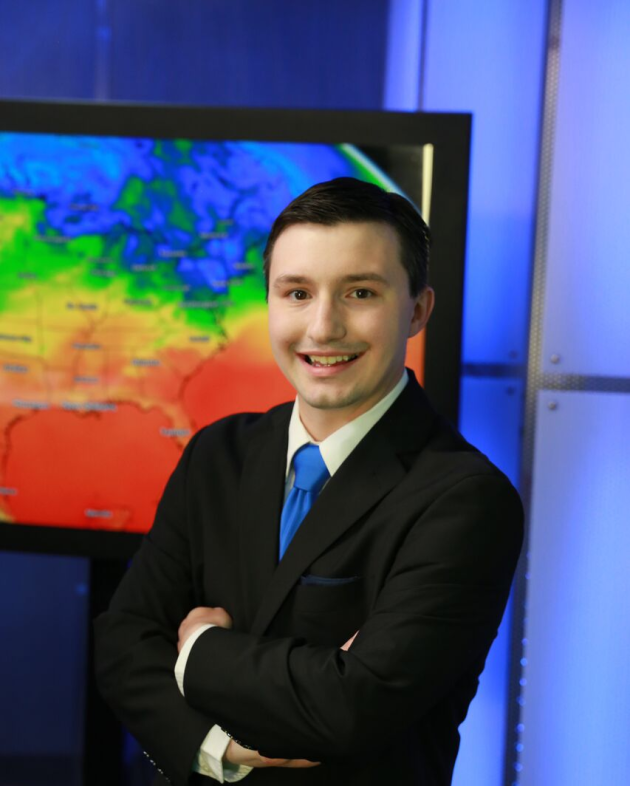Top Five Minnesota Weather Stories Of 2017

Image: Wind damage to Pierre the Voyageur, in Two Harbors. Image credit: Adelle Whitefoot &Lake County News-Chronicle, via Duluth News Tribune
Late last week the Minnesota State Climatology Office took a look back at the top five weather stories of 2017 in the state of Minnesota. Here’s number five:
“#5 Pierre the Voyageur Loses an Arm: Windy March 7-8, 2017
On August 4, 2016 Babe the Blue Ox at Paul Bunyan Land Amusement Park was toppled over in a wind storm. In 2017, another roadside attraction took a hit. This time a strong cold front brought winds clocked at 60mph at the Twin Cities International Airport, knocking over recycling and garbage cans and many small branches. The US Bank Stadium lost some siding panels. Grand Marais had a wind gust of 66 mph and the high winds were too much for Pierre the Voyager in Two Harbors, losing an arm and his paddle in the winds.”
Check out the rest of the top five from the Minnesota State Climatology Office.
_______________________________________________
Thaw by Mid-January, but Still No Significant Snow
By Paul Douglas
“Hey Paul, where’s your global warming now?” Good one. Hey, did you actually look at what’s happening, globally? Temperatures are warmer than average across the entire planet, with the exception of North America.
It’s cold out there, but this is a data point, not a trend. NASA says 16 of the 17 warmest years on record occurred since 2001. When record lows start to consistently outpace record highs drop me a line. Then again, we live in our bubbles – we see what we want to see.
Right now I wouldn’t mind seeing a warm front, and it’s coming. Models show 20s, even low 30s on Sunday, with a few days at or above 32F by mid-January, as winds aloft shift gears and blow from the Pacific. Until then a couple more subzero swipes Friday, again next Tuesday. But these cold spells won’t linger as long as what we just experienced.
What I find odd is that it can be this cold – with so little snow on the ground for most of the state. MSP has picked up a meager 7 inches of snow this winter; we should have seen 22 inches.
It’s cold, no debate. But we’re experiencing half a winter. Again.
_______________________________________________
Extended Twin Cities Forecast
TUESDAY: Clouds increase, breezy. High 14. Low 0. Chance of precipitation 20%. Wind SW 10-15 mph.
WEDNESDAY: Blue sky, colder wind kicks in. High 7. Low -8. Chance of precipitation 10%. Wind NW 8-13 mph.
THURSDAY: Fresh air! Sunny, feels like -15F. High 3. Low -13. Chance of precipitation 10%. Wind NW 7-12 mph.
FRIDAY: Brilliant sunshine, winds ease. High 1. Low -7. Chance of precipitation 10%. Wind NW 5-10 mph.
SATURDAY: Breezy, no big travel headaches. High 16. Low 12. Chance of precipitation 20%. Wind S 10-20 mph.
SUNDAY: Few flurries, feeling better out there. High 28. Low 16. Chance of precipitation 30%. Wind SW 7-12 mph.
MONDAY: Clouds increase, late snow? High 23. Low 12. Chance of precipitation 40%. Wind W 5-10 mph.
_______________________________________________
This Day in Weather History
January 2nd
1941: Grand Portage gets over 4.5 inches of precipitation in 24 hours. That’s roughly how much normally falls there during the ‘winter’ months from November to February.
_______________________________________________
Average Temperatures & Precipitation for Minneapolis
January 2nd
Average High: 24F (Record: 45F set in 1998)
Average Low: 8F (Record: -36F set in 1885)
Average Precipitation: 0.03″ (Record: 0.46″ set in 1999)
Average Snow: 0.4″ (Record: 6.1″ set in 1999)
_______________________________________________
Sunrise/Sunset Times for Minneapolis
January 2nd
Sunrise: 7:51 AM
Sunset: 4:43 PM
*Length Of Day: 8 hours, 52 minutes and 2 seconds
*Daylight Gained Since Yesterday: ~0 minutes and 55 seconds
*Latest Sunrise: December 30th-January 5th (7:51 AM)
*Next Sunset at/after 5 PM: January 17th (5:00 PM)
_______________________________________________
Minnesota Weather Outlook

Warmer weather awaits on Tuesday, with highs climbing into the teens across most of the state. We will be watching a clipper system that’ll move across the state today into tonight, bringing the chance of some flurries and light snow showers with it.

Enjoy the warmer air on Tuesday, as highs will be between 5-15 degrees below average across most of the state. The area of the state that will see highs closest to average will be in northwestern Minnesota.

Behind the clipper, we will see another blast of cold, Canadian air work into the region. Highs on Wednesday will be in the single digits above zero across southern Minnesota, and stay below zero up north.
Below average temperatures continue through the week, but we do see a little moderation in temperatures as we head into the weekend. We could see highs in the 20s Sunday – but it could be only a quick warm up, with cooler temperatures returning next week.

Snow amounts with this clipper moving through Tuesday and Tuesday Night are expected to be light across the state as this system lacks moisture.
Looking into the future, models are showing the potential of a system Saturday Night and Sunday that would have the potential of bringing some snow to the region. We’ll keep an eye on this over the next several days to see what happens.
_______________________________________________
National Weather Outlook

High pressure will dominate the central portion of the nation Tuesday, meaning most of the weather will be found around the edges of the country. Another cold blast of air is set to work in from Canada, bringing some snow showers to parts of the upper Midwest. Some showers will be likely across central and southern Florida, with some light rain/sleet along the central Texas Gulf Coast. The other story – the cold air still gripping a good portion of the country.

We are once again expected above average highs across parts of the Southwest for the first day of the work week (given you had Monday off as a holiday), with most of the rest of the country seeing below average highs.

Precipitation could be hard to find most of this week across the county. First, lake effect snow will continue across the Great Lakes over the next several days. As we head toward Wednesday and the end of the week, at least one system will approach the west coast, bringing the chance of some showers. The other story we’ll watch is on the east coast, where we will watch low pressure form and move up the coast Wednesday into Thursday. This has the potential to bring snow along the East Coast. The overall path of the system (how close the system moves toward the coast) will determine how much snow could fall, especially in the Northeast. Models continue to show different possibilities, however the systems won’t be well-sampled by our upper-air observation system until Monday Night, so hopefully Tuesday we’ll start to see more model agreement.
_______________________________________________
Bundle Up In Tampa!

Take a look at this seven day forecast for Tampa, FL. They are going to see a stretch of sub-60 degree temperatures as we go through this week. Putting it in perspective, the last time they saw at least five straight days of sub-60 highs was January 2-11, 2010. That is the longest stretch on record (going back to 1890) on record. The second longest was seven days between January 8-14, 1956. They have the potential to see six in a row this week which would tie them for third longest on record with December 30, 2000-January 4, 2001 and January 24-29, 1940.
Warmest Year On Record For At Least Two Dozen U.S. Cities

ClimateDork put together a map showing the temperature rankings across the country using ThreadEx stations for 2017, and it shows that at least two dozen cities saw their warmest year on record in 2017. More information on the above map: “For 25 cities, ranging from Palm Springs, CA to Cleveland, OH and Norfolk, VA, this was the hottest year on record (see red boxes on map). An additional 85 locations ranked 2-5 (orange boxes) while 73 ranked 6-10 (dark yellow boxes). These 183 stations recording a Top 10 Hottest Year represent nearly 60% of all the stations.”
The Seafloor Is Sinking

Satellites may actually be underestimating how much sea levels are rising due to climate change as the seafloor (which it can’t see) is actually sinking. More from Earther: “If there’s one thing we’re learning about this global planetary experiment called climate change, it’s that there are unexpected consequences. Case in point: All of the water pouring off Earth’s melting ice sheets is making the oceans heavier, so much so that seafloors are literally sinking. And that could be messing with our measurements of global sea level rise.”
________________________________________________
Thanks for checking in and have a great Tuesday! Don’t forget to follow me on Twitter (@dkayserwx) and like me on Facebook (Meteorologist D.J. Kayser)!
– D.J. Kayser


